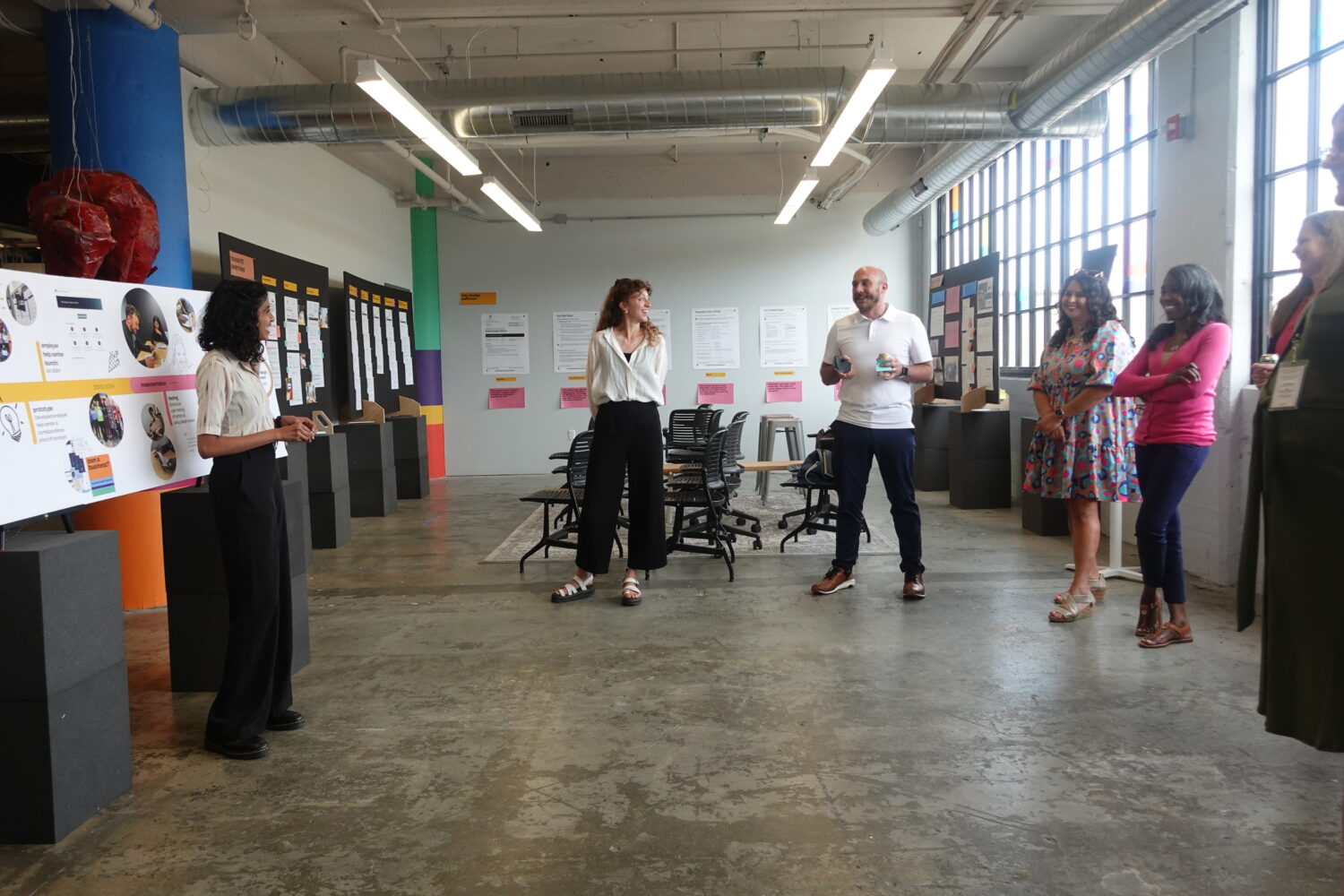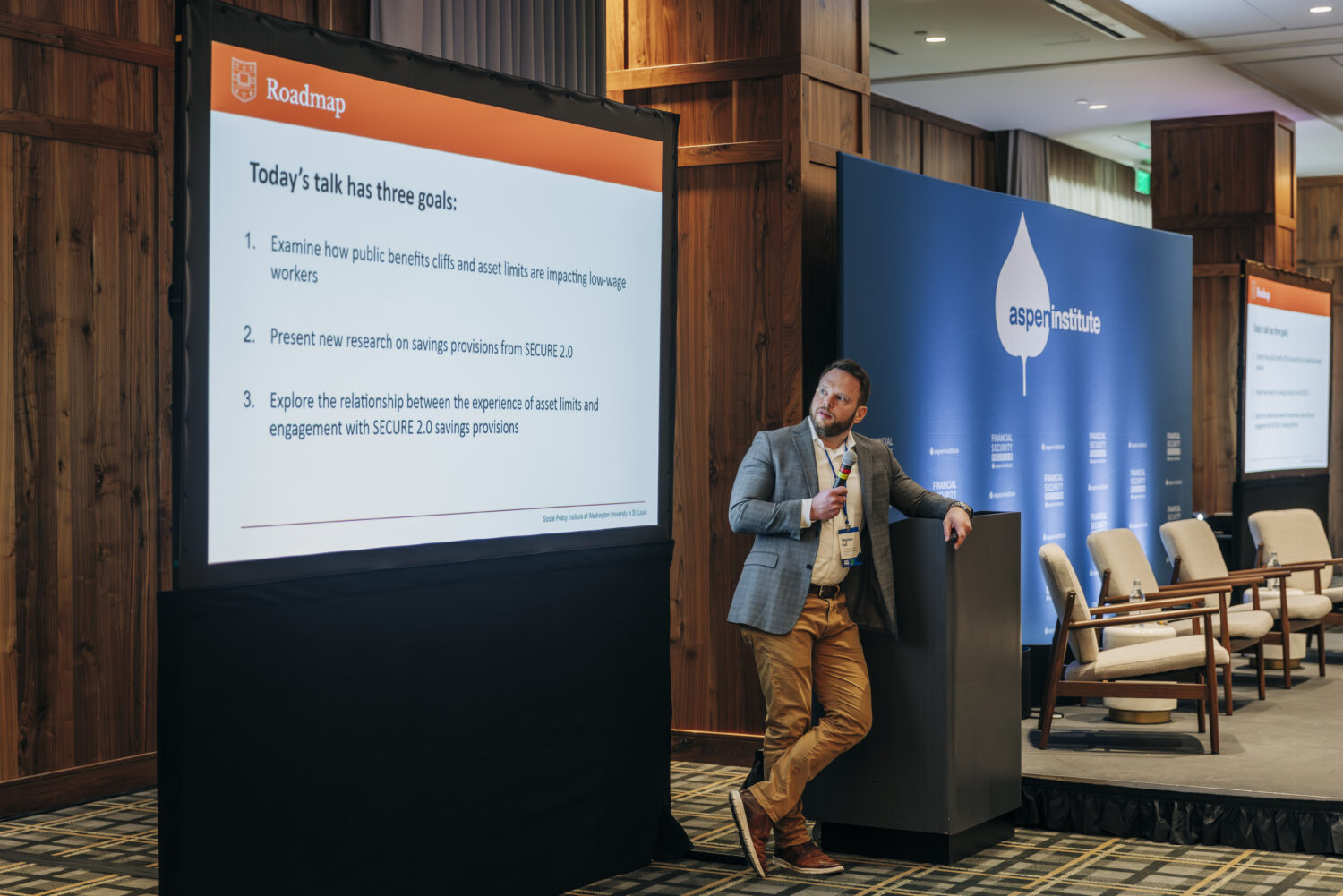Alongside adequate wages, quality public and private benefits play a critical role in helping workers achieve both short-term financial stability and long-term security. Public benefits such as the Supplemental Nutrition Assistance Program (SNAP), Medicaid, and childcare assistance support workers’ ability to make ends meet and remain and advance in the workforce. Meanwhile, traditional workplace benefits—like retirement savings, health insurance, paid time off, and other financial wellness benefits including emergency savings accounts and student loan assistance—provide a buffer against life’s ups and downs and help workers prepare for the future. Together, these benefits support financial security beyond what a paycheck alone can offer.
While these benefits should blend and braid to form a seamless financial foundation for workers, in reality, their connections are deeply fractured, leaving significant gaps in access, sufficiency, and reliability. For workers earning low wages, the importance of benefits is even more critical. Yet these workers often lack stable employment and benefits: Only 41 percent have access to health insurance, a retirement plan, and paid sick leave, and few have a steady connection to their employer, risking the workplace benefits some do have if they change jobs.
To address the disconnect between working and financial security, the Aspen Institute Financial Security Program (Aspen FSP) and the Center for Social Development (CSD) at Washington University in St. Louis co-hosted a roundtable, “Variable Employment Arrangements, Patchwork Safety-Nets: New Insights for Forging Pathways to Financial Security for All Workers.” Together, more than three dozen experts in public and workplace benefit provision, including corporate leaders, state and local policy administrators, worker advocates, benefits providers, funders, and researchers, examined the relationship between employment relationships and worker financial security. Through panels and discussions, attendees examined challenges facing workers and how benefits provision inside and outside the workplace are performing in their ability to reach—and deliver needed support for—workers, regardless of their classification or sector.
This blog summarizes some of the key discussion points raised during the roundtable.
Person-centered insights can help providers design and offer benefits that meet people where they are.
Roundtable attendees shared how they learn directly from workers to improve benefit provision. One lesson from engaging directly with workers: Benefits must reflect the complexity of worker’s lives as unpaid or paid caregivers, parents, people balancing multiple jobs through various employment arrangements, or gig/platform employment. This insight raised questions around what benefits to offer workers, how to communicate those options, and how benefits should be provided. Attendees also discussed portable benefits and whether they might more easily adapt to more diverse and dynamic employment arrangements than benefits tied to just one employer or workplace.
Both workplace and public benefit providers face barriers to benefit provision.
Attendees emphasized the ways benefits providers can be disincentivized to offer additional benefits—despite a desire to innovate and expand access. Barriers such as time and monetary cost and litigation concern were near the top. But they also cited lesser-known concerns such as benefits cliffs and asset limits, when well-meaning actions or benefit offerings that increase wages or assets (like a pay raise or certain retirement plans) may negatively impact employees’ public benefits receipt. The resulting savings and work penalties represent a design problem that requires federal and state solutions. Moreover, recent policy changes will create additional compliance requirements and result in limited capacity and budgets for states.
With these barriers in mind, participants suggested exploring ways to ease the burden for benefits providers. In some cases, as with expanding access to retirement plans, that may mean fostering more innovation from the states to provide plans. In other cases, it may just mean streamlining the process for employers. For instance, attendees wondered whether automation or opting employers into specific benefit provisions, such as offering retirement or emergency savings accounts, could improve access and participation across sectors.
Benefits pooling models and mutual aid are promising innovations for nontraditional workers.
According to CSD, workers earning low wages are less likely to have stable employment, defined as working full- or part-time for an employer and do not have conditions such as holding multiple jobs, having a temporary position, or facing a variable work schedule. Moreover, workers with temporary, multiple, contract, part-time, or gig jobs are also less likely to be eligible for workplace-provided benefits and may struggle to access needed public benefits. Proving employment status in public benefits applications is a common barrier, for instance. In this context, participants raised questions regarding who is responsible and best positioned to provide benefits.
Attendees discussed opportunities to expand beyond more traditionally conceived ideas of workplace-provided benefits, including exploring ways to pool independent workers such as artists or others outside of traditional employment arrangements. Some attendees drew from other models such as savings and lending circles, mutual aid societies, and unions, and emphasized a need for scalable and proven models to serve this subset of workers.
Next Steps and Needed Conversations
Participants identified open questions to expand the conversation about future benefits provision to a broader set of stakeholders:
- How can we mobilize across sectors—including philanthropy, civic tech, and employers—to add capacity to states working to blunt the impact of federal policy changes on their workers? What are the highest-impact interventions to shift the burden and costs away from workers and benefit administrators?
- What is a more nuanced narrative—and supporting evidence—around the relationship between public benefits and workforce and labor market outcomes that could open up new space and engage new stakeholders to explore more effective solutions supporting worker financial security? Who are the best messengers for that narrative?
- What steps can we take now to lay the groundwork for a future-state of benefits delivery built for the complexity of workers’ lives and a dynamic set of work arrangements? What models can we draw from to inspire and inform this work?
Advancing a More Integrated Benefits Delivery System
To achieve financial stability, workers need enough resources to comfortably afford everyday life, build savings, and withstand financial shocks. This requires integrated, responsive, and modernized benefits inside and outside of the workplace that build upon adequate wages.
Aspen FSP will continue to host convenings to bring together wide ranging stakeholders as they address the pressure workers face in their pursuit of financial stability and security. In November 2025, the Workers’ Wealth Lab will spotlight the differential uptake and impact of workplace-provided benefit offerings, and whether there are ways to improve their reach in service of the financial security outcomes for workers. Also in November, the third annual Benefits Leadership Forum will focus on the impact of recent legislative changes on the availability and provision of public benefits, and how integrated public and private systems must be designed to meet the needs of all families.





